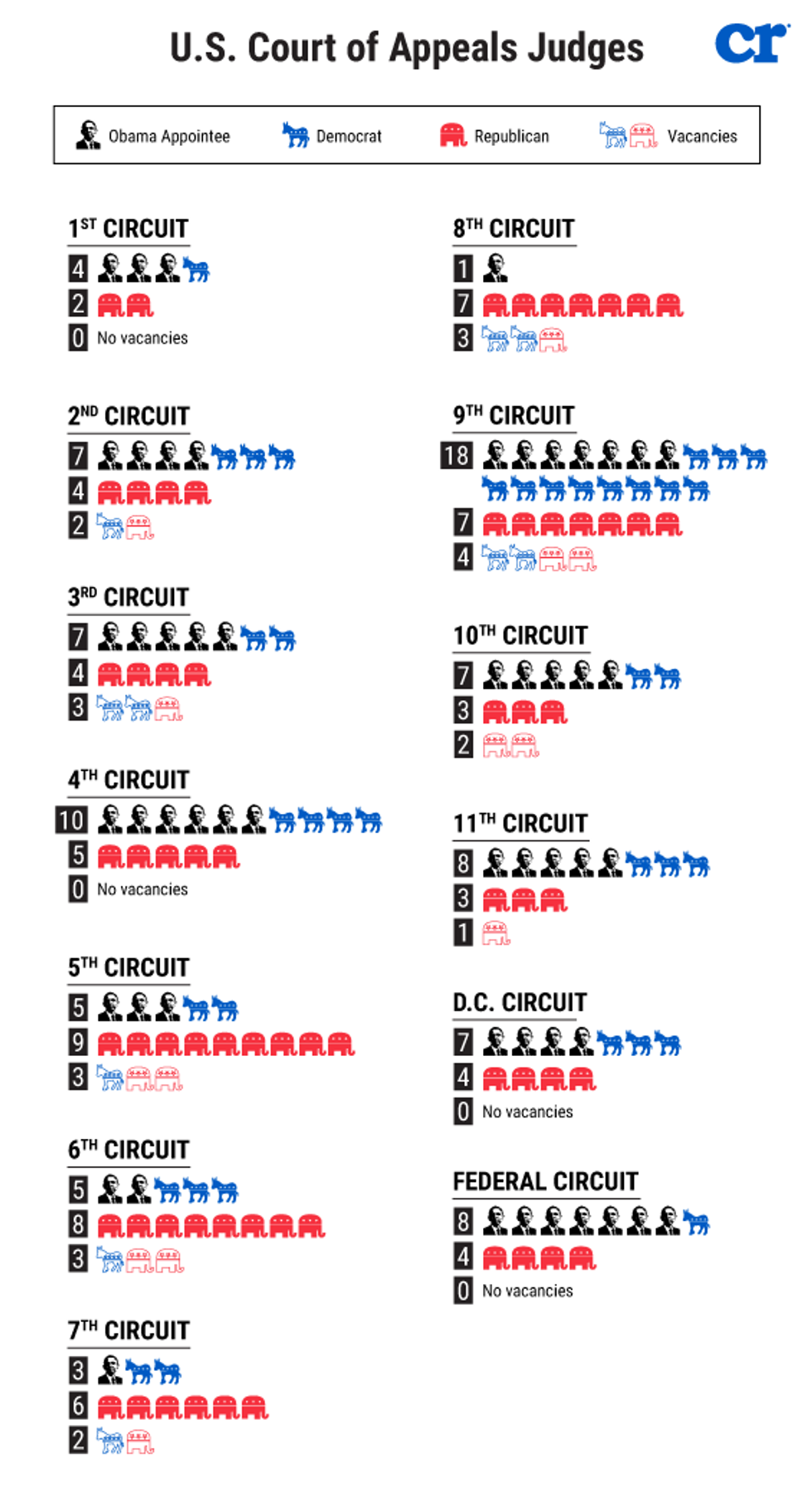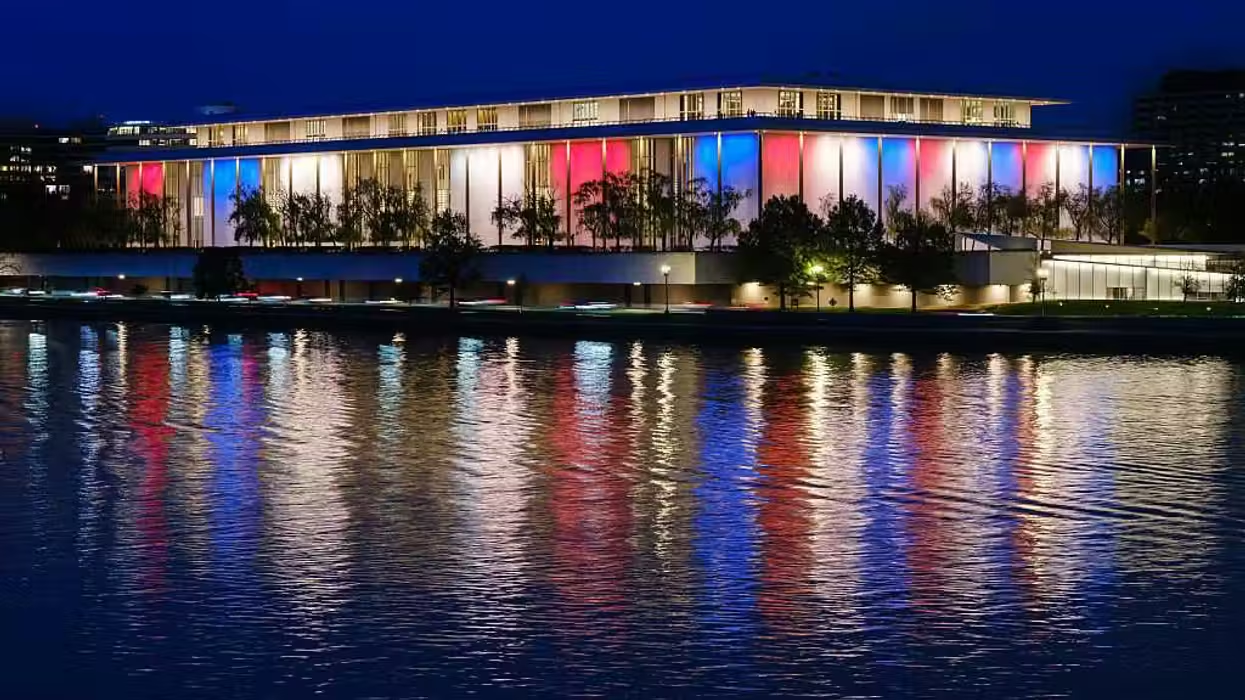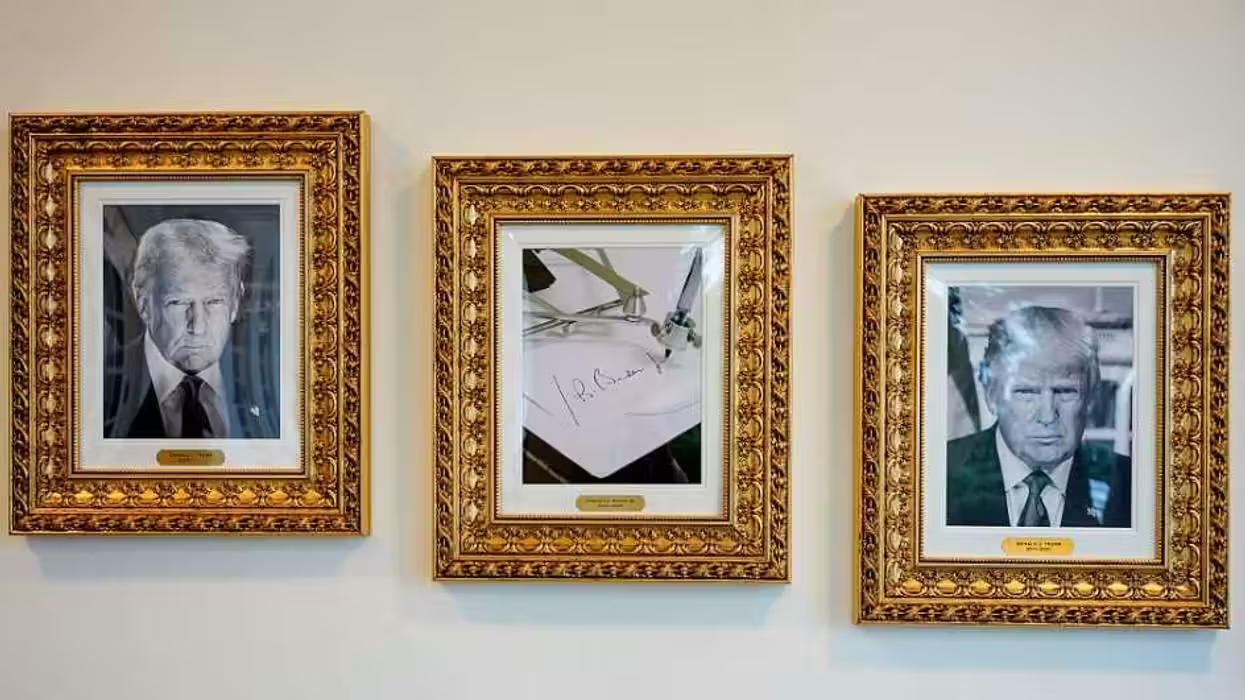
© 2025 Blaze Media LLC. All rights reserved.
President Trump announced a strong starting slate of judges on Monday to follow up on his campaign promise to fill the third branch of government with jurists who “will interpret the Constitution the way the founders wanted it interpreted.”
While the list is strong, the odds and the system are still rigged decidedly to the left and our constitutional crisis requires far more than even the best legal personnel.
A strong team
In a press release published on the White House website, the administration touted its newest, highly anticipated list of 10 new federal judge appointments, made up of men and women with impeccable legal credentials and resumes that show the president’s seriousness about his judicial promises.
Here come Trump’s judges: President to put forward more strong judicial nominees https://t.co/6EaFh1MPfO
— Post Opinions (@PostOpinions) May 8, 2017
On judicial nominations, Donald Trump is getting advice from the right sources and actually taking it. Credit where credit is due. https://t.co/FZknHpUQjW
— Robert P. George (@McCormickProf) May 9, 2017
Trump will face obstruction from the “blue slip” rule
On its face, the prospect of Trump being able to fill the over 120 current vacancies in the federal court while being enabled to do so seemingly freely by a nuclear Senate seems like an easy task. And it’d also appear to allow the president and the originalists advising him to remake the judiciary in similar fashion to what Obama did during his eight-year tenure.
But it’s just not that easy. There’s still a big hang-up that the GOP may very well run into in the Senate: namely, the “blue slip” process. Basically, the “blue slip” tradition works as such …
As CR explained in much greater detail earlier on the site, the tradition allows senators of either party to quietly block nominees they don’t agree with, based on the geography of the open seat:
One of the reasons why we have many liberal judges from Republican presidents — such as Judge Robart, a W appointee — is because Democrat senators can “blue slip” any nominee from their state they dislike. Under Senate tradition, the Judiciary Committee will refuse to hold a hearing on any nominee that is officially opposed by the home state senators. This is why it’s so hard to get even a marginally conservative judge approved from blue states, much less someone in the mold of Clarence Thomas.
Even in red states with two GOP senators, the judicial nominees often reflect a legal mirror image of their political views, which are moderate at best. And in states with senators from opposing parties, Republicans have often cut deals to approve only those nominees who are acceptable to their home state Democrat senator.
It’s why the most outlandish legal decisions always seem to come from circuits in which partisan politics are decidedly further to the left; the Senators of the states within those circuits are the gatekeepers to the bench.
“The limitation of state allocation rules and blue slip obstruction are killers,” CR’s Horowitz says. “This is why despite swearing every time we will do a better job ‘appointing better judges,’ we wind up with more [Anthony] Kennedys and [John] Roberts on the lower courts. It’s also why outside of the geographical areas of the fifth and eighth circuits, it’s hard to appoint a string of reliable conservatives.”
This not only means that the current nominees from Michigan and Minnesota stand a more-than-likely chance of getting scrapped, but why it will prove incredibly difficult to noticeably change the makeup of circuits like the “nutty ninth,” in which seats vacated by California judges will have to garner the approval of Sens. Dianne Feinstein (D) and Kamala Harris (D), who put their staunchly progressivist legal philosophies on full display during Justice Gorsuch’s grueling and often farcical nomination hearing.
Circuit by circuit math still looks grim
Consider the scope of the vacancies by circuit. There are currently 23 vacancies, or announced vacancies, for appellate judgeships. But if you break them down by circuit and political party, you will see that many of them are replacing other good judges and will not “flip” a seat or a circuit.
For example, two of the three vacancies on the Sixth Circuit were from seats of reliable originalists. Only 10 of the 23 vacancies are Democrat seats, and two of them are on the Ninth, which is irremediably broken, while two are on the Eighth, which is already solid in its makeup.
Moreover, a great deal of other vacancies will come from states with at least one, if not two, Democrat senators. We posted a full circuit-by-circuit analysis in February, demonstrating Trump’s limited ability to fundamentally alter a circuit the way Obama did with the Fourth, 10th, 11th, and D.C. Circuits.
To begin with, the D.C. Circuit – the second-most influential court in the land on constitutional issues – is saddled with a young and insurmountable left-wing majority. The only areas where Trump can make his mark turning over Dem seats is on the Fifth and Eighth Circuits, which are already mostly in the originalist camp. Most of the other circuits will not be swung, certainly not in just one term.
Take the Second and Third Circuits, for example, where there are five vacancies between the two panels. They are seats from New York, Pennsylvania, and New Jersey. The vacancies in the Seventh and 10th Circuits all hail from states with Democrat senators. Unless the blue slip rule is abolished, any solid originalist will undoubtedly be scuttled by home state Democrat senators.
Therefore, even if every last one of Trump’s appellate picks are solid, it’s not likely to shift the balance of any circuit. And given that most liberal judges view Trump as an anathema to their existence, it’s unlikely too many of them will willingly retire. In fact, all the appellate vacancies that have arisen since Trump’s election were GOP appointees.
Thus far, Sen. Tom Cotton, R-Ark., has floated the idea of doing away with the tradition should any of the nominees find themselves blocked in committee.
Tom Cotton tells Hugh Hewitt the Senate may need to change the Blue Slip tradition if @alfranken blocks Trump's judges.
— Steven Dennis (@StevenTDennis) May 9, 2017
While Cotton’s idea may ruffle some feathers in the chamber, keeping the practices, as Judiciary Committee Chairman Chuck Grassley, R-Iowa, as he and others want to do, it will gravely inhibit the president’s ability to fill the over six core vacancies throughout the Article III courts with the kinds of judges Trump promised.
On a more practical level, it will also inhibit Trump’s ability to even make any progress on many circuits to give conservatives a better chance of getting a solid three-judge panel in important cases.
Other options:
Short of torching the blue slip, the other way to combat judicial tyranny would be to break up some the federal circuits – as federal lawmakers have previously suggested multiple times – and have judges address issues more locally than they already do.
But as long as Congress fails to ditch the practice of nationwide injunctions, liberals will always be able to shop a national case to district judges in San Francisco and Hawaii and keep the scam of social-transformation-without-representation in full swing.
Therefore, the power to truly transform and rein in the judicial branch has to come from Congress, which would invoke its Article III powers over the courts to revamp the circuit system’s jurisdiction wholesale, examples for which can be found in Horowitz 2016 book “Stolen Sovereignty.”
Want to leave a tip?
We answer to you. Help keep our content free of advertisers and big tech censorship by leaving a tip today.
Want to join the conversation?
Already a subscriber?
more stories
Sign up for the Blaze newsletter
By signing up, you agree to our Privacy Policy and Terms of Use, and agree to receive content that may sometimes include advertisements. You may opt out at any time.
Related Content
© 2025 Blaze Media LLC. All rights reserved.
Get the stories that matter most delivered directly to your inbox.
By signing up, you agree to our Privacy Policy and Terms of Use, and agree to receive content that may sometimes include advertisements. You may opt out at any time.







